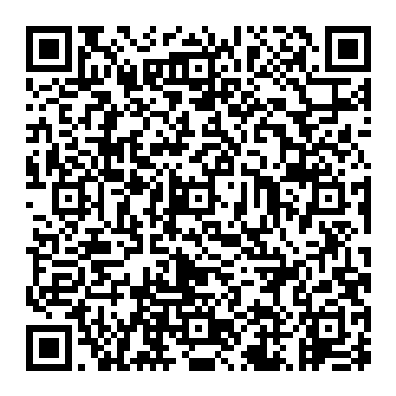有负面记录后,个人可以采取哪些措施修复自己的信用记录? - 行测知识


有负面记录后,个人可以采取哪些措施修复自己的信用记录?减小字体增大字体有负面记录后,个人可以采取哪些措施修复自己的信用记录?
答:个人应当在日常生活中注意养成良好的意识和习惯,从根本上避免因出现负面记录而给自己造成的不利影响。首先是注意养成良好的消费习惯和还款习惯,对于日常消费、贷款和各类缴费,要注意还款期限,避免出现逾期,以诚为本,恪守信用,树立良好的信用意识。其次是妥善安排有关信贷活动,并做好关联预警提示。选择合适的还款方式,采取有效的提醒措施,确保每笔贷款和信用卡按时还款。
如果目前自己的信用报告中存在负面记录,那么首先是要避免出现新的负面记录,其次是尽快重新建立个人的守信记录。商业银行等金融机构在判断一个人的信用状况时,着重考察的是这个人最近的信贷交易情况。如果一个人偶尔出现了逾期还款,但此后都是按时、足额还款,这足以证明其信用状况正在向好的方向发展。
用户名:!查看更多评论
分值:100分55分1分
内容:!
通知管理员验证码:点击获取验证码
解放军文职招聘考试会议记录-解放军文职人员招聘-军队文职考试-红师教育
发布时间:2017-09-20 22:52:12会议记录 是在会议中记录人员把会议的基本情况(时间、地点、出席人员、主持者、讨论的主要问题等),研究和讨论的问题,报告、发言的内容,形成的决议等如实记录下来成为书面材料的一种文书。会议记录的结构包括会议基本情况、会议内容和结尾三部分组成。会议基本情况包括标题(开会单位、会议名称、文体)和会议组织情况。会议组织情况包括开会时间、地点、主持人、记录人、出席人(出席人少的要写明姓名、职务;出席人多时 可写出这些人的级别及人数。重要的级别较高的会议可设签到簿),要求写上姓名、注明职务,列席人、缺席人(写明姓名、职务及事由)。会议内容包括会议研究、讨论的问题,领导报告(有书面材料的可不记),发言、讨论的情况(按发言先后顺序记录),决议事项、工作安排(如有通过表决的决定,在记录决定条款时还要记下赞成票、反对票、弃权票的数目),遗留问题等。结尾换行空两格写上 散会 。末尾右下方由主持人、记录者签名。例文:全县林业工作大会时间: 年 月 日地点:通道县林业局六楼会议室出席人员:分管林业副县长 ,局所有领导,各乡镇分管林业领导,各基层林业站站长、木材检查站站长及局机关全体。(详见签到单)缺席人员: (事由), (事由)主持人:记录人:议题:布置林权换发证工作任务一、 副县长作题为《 》的工作报告。二、 副局长就换发证工作的相关要求及各乡镇的任务作说明。1、2、3、三、 局长对下一阶段工作重点作布置:1、加强领导,按时完成林权换发证工作任务。2、及时完成秋季造林验收,特别是退耕还林小班的复查。3、按时搞好今冬明春造林小班摸底并及时上报造林规划设计。4、(略)5、(略)散会主持人:(签名)记录人:(签名)
解放军文职招聘考试实验记录、报告的基本要求-解放军文职人员招聘-军队文职考试-红师教育
发布时间:2017-08-24 14:07:04学生在本课程开始时,必须认真地阅读本书第一部分有机化学实验的一般知识。在进行每个实验时,必须做好预习、实验记录和实验报告。一、预习为了使实验能够达到预期的效果,在实验之前要做好充分的预习和准备,预习时除了要求反复阅读实验内容,领会实验原理,了解有关实验步骤和注意事项外,还需在实验记录本上写好预习提纲。以制备实验为例预习提纲包括以下内容:(1)实验目的:(2)主反应和重要副反应的反应方程式;(3)原料、产物和副产物的物理常数;原料用量(单位:g,mL,mol),计算理论产量;(4)正确而清楚地画出装置图:(5)用图表形式表示实验步骤。二、实验记录实验记录本应是一装钉本,不得用活页纸或散纸。记录本按照下列格式做实验记录:(1)空出记录本头几页,留作编目用:(2)把记录本编好页码:(3)每做一个实验,应从新的一页开始:(4)若你对实验操作没有变动时,不必再把操作细节记上。但应记录:试剂的规格和用量,仪器的名称、规格、牌号,实验的日期,实验所用去的时间,实验现象和数据。对于观察的现象应忠实地详尽地记录,不能虚假。判断记录本内容的标准,是记录必须完整,且组织得好和清楚,不仅自己现在能看懂,甚至几年后也能看懂,而且还使他人能看得明白。如漏记了主要内容,就将难于补救了。实验记录
解放军文职招聘考试Recording an earthquake 记录地震-解放军文职人员招聘-军队文职考试-红师教育
发布时间:2017-06-30 23:53:58An earthquake comes like a thief in the night, without warning. It was necessary, therefore, to invent instruments that neither slumbered nor slept. Some devices were quite simple. One, for instance, consisted of rods of various lengths and thicknesses with would stand up end like ninepins. When a shock came, it shook the rigid table upon which these stood. If it were gentle, only the more unstable rods fell. If it were severe, they all fell. Thus the rods, by falling, and by the direction in which they fell, recorded for the severe, they all fell. Thus the rods, by falling, and by the direction in which they fell, recorded for the slumbering scientist the strength of a shock that was too weak to waken him, and the direction from which it came.But instruments far more deliecate than that were needed if any really serious advance was to be made. The ideal to be aimed at was to devise an instrument that could record with a pen on paper, the movements of the ground or of the table as the quake passed by. While I write my pen moves, but the paper keeps still. With practice, no doubt, I could in time learn to write by holding the pen still while the paper moved. That sounds a silly suggestion, but that was precisely the idea adopted in some of the early instruments (seismometers) for recording earthquake waves. But when table, penholder and paper are all moving, how is it possible to write legibly? The key to a solution of that problem lay in an everyday observation. Why does a person standing in a bus or train tend to fall when a sudden start is made? It is because his feet move on , but his head stays still. A simple experiment will help us a little further. Tie a heavy weight at the end of a long piece of string. With the hand to and fro and around but not up and string so that the weight nearly touches the ground. Now move the hand to and fro and around but not up and down. It will be found that the weight a piece of string. With the hand held high in the air, hold the string so that the weight nearly touches the ground. Now move the hand to and fro and around but not up and down. It will be found that ten weight moves but slightly or not at all. Imagine an earthquake shock shaking the floor, the paper, you and your hand. In the midst of all this movement, the weight and the pen would be still. But as the paper moved from side to side under the pen point, its movement would be recorded in ink upon its surface. It was upon this principle that the first instruments were made, but while the drum was being shaken, the line that the pen was drawing wriggled from side to side. The apparatus thus described, however, records only the horizontal component of the wave movement, which is, in fact, much more complicated. If we could actually see the path described by a particle, such as a sand grain in the rock, it would be more like that of a bluebottle path described by a particle, such as a sand grain in the rock, it would be more like that of a bluebottle buzzing round the room; it would be up and down, to and fro and from side to side. Instruments have been devised and can be so placed that all three elements can be recorded in different graphs.When the instrument is situated at more than 700 miles from the earthquake centre, the graphic record shows three waves arriving one after at short intervals. The first records the arrival of longitudinal vibrations. The second marks the arrival of transverse vibrations which travel more slowly and arrive several minutes after the first. These two have travelled through the earth. It was from the study of these that so much was learnt about the interior of the earth. The third, or main. The third, or main wave, is the slowest and has travelled round the earth through the surface rocks.参考译文地震就像夜间的小偷,不打招呼就来了。因此,有必要发明一种仪器,既不打盹儿,也不睡觉。有些装置非常简单。例如,有一种装置是由一些长短、粗细不同的木棒组成,就像九柱戏的木棒一样坚立着,一旦有地震,就会震动竖立在坚硬的桌上的木棒。如果地震轻微,只有不稳定的木棒倒下;如果地震剧烈,所有的木棒都会例下。由于地震太弱而未惊醒科学家时,木棒倒下的多少和倒下的方向就为科学家记录下了地震的强度和地震方向。但是,如果要取得真正重大的进展,需要有比这种装置精细得多的仪器。理想的目标是设计出这样一种仪器:当地震发生时,它能用笔在纸上记录下大地和桌子运动情况。我写字时,笔是移动的,纸是静止的。毫无疑问,经过练习,我最终能够学会笔不动而纸动来写字。这听起来似乎是一种愚蠢的想法,但是早期记录地震波的仪器(地震仪)正是采用了这中思路。可是,当桌子、夹笔装置、纸都在移动时,怎么能书写得清楚呢?可以从我们的日常生活观察中找到这个问题的答案。一个站在公共汽车或火车上,当车突然开动时,他为什么会倾倒呢?这是因为他的脚动了,而他的头保持着静止。再做一个简单的实验可以帮助我们进一步理解这个问题。把一个生物拴在一根长绳子的一端,把手高高举在空中握住绳子,让重物几乎接触地面。然后把手前后左右以及旋转摆动,但不要上下摆动。结果会发现,重物是动了,但动得很小,甚至没动。假定把一支笔拴在重物上,笔尖落在地板上的一张纸上,假定地震发生了,地板、纸、你和你的手都会动,重物和笔却不动。由于纸在笔下来回运动,纸的表面就会用墨水记录下地板运动的情况。根据这一原理,制造出了最初的地震仪器,但是纸是卷在慢慢放置的圆筒上的。只要一切都是静止的,笔就会划出一条直线;但是,圆筒受到震动,笔所画出的线就会就会左右摆动。然而,这里所说的仪器记录下来的只是地震波运动中的水平部份,地震波的运动实际比这要复杂得多。假如我们真能看到诸如岩石中一个沙粒子的运动轨迹,那就像一只嗡嗡叫的绿头苍蝇在屋内飞行的轨迹,呈现出上上下下、来来回回、左左右右3种性质的运动。已经设计出了一些仪器,它按照一定的安放方式就可测绘出这三种运动的曲线图。如果把这种仪器安装在距震源700多英里远的地方,曲线记录就能显示出前后相同的这3种地震波。首先记录下的是纵向波的到达;然后记录下的是横向波的到达,横向波比纵向波传播得慢,在纵向波到过几分钟后能到达。这珍两种波都是穿过地球而来的。正是从这两种波中的研究中,我们可以了解到地球内部的许多情况。第三种波,即主波,是最慢的,是围绕地球通过表面岩石传来的。







